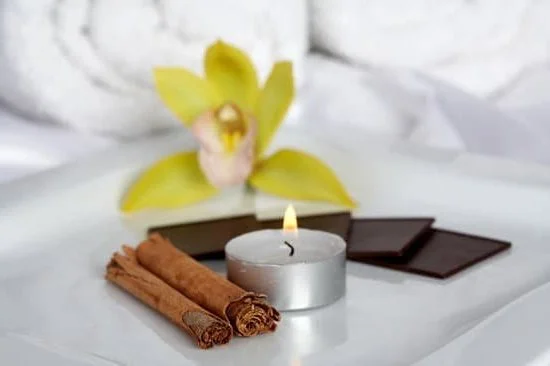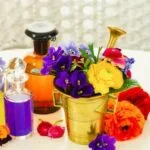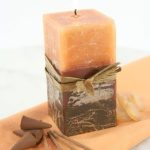Massage therapy, aromatherapy, and acupuncture are all examples of complementary and alternative medicine practices that have gained popularity for their holistic approach to health and wellness. Each of these practices has its own unique benefits and uses, but they all share the common goal of promoting overall well-being and improving quality of life.
In this article, we will delve into the world of massage therapy, aromatherapy, and acupuncture to gain a better understanding of their origins, benefits, and how they can complement each other in a wellness routine. From the history of massage therapy to the science behind acupuncture, we will explore the various aspects of these practices and debunk any myths or misconceptions associated with them.
We will also take a closer look at the different types of massage therapy techniques, the healing properties of essential oils used in aromatherapy, and the role of acupuncture in traditional Chinese medicine. By understanding the fundamentals of these practices, individuals can make informed decisions about incorporating them into their own wellness routines for a more balanced and healthier lifestyle.
The History of Massage Therapy and Its Evolution
Massage therapy, aromatherapy, and acupuncture are all examples of holistic healing practices that have been used for centuries to promote health and well-being. The history of massage therapy can be traced back to ancient civilizations such as China, India, and Egypt, where it was used as a form of natural healing. Over time, massage therapy has evolved and adapted to different cultures and medical practices, leading to the wide variety of techniques and approaches available today.
In ancient China, massage therapy was an integral part of traditional Chinese medicine (TCM), which focused on restoring balance and harmony within the body. Similarly, in India, the practice of Ayurveda utilized massage as a way to cleanse the body and promote physical and mental wellness. As these healing traditions spread throughout the world, they influenced the development of various massage therapy techniques that are now practiced in modern spas, clinics, and wellness centers.
The evolution of massage therapy has also been influenced by advancements in medical science and research. Today, there is a growing body of evidence supporting the therapeutic benefits of massage for conditions such as chronic pain, stress management, sports injuries, and overall wellness. As a result, massage therapy has become increasingly integrated into mainstream healthcare settings as a complementary treatment option.
| Country | Early Massage Techniques |
|---|---|
| China | Tui na – a form of Chinese manipulative therapy often used in conjunction with acupuncture |
| India | Ayurvedic massage – part of the traditional Indian system of medicine |
| Egypt | Reflexology – believed to have its roots in ancient Egyptian civilization |
Exploring the Benefits of Aromatherapy for Mind and Body
Aromatherapy is a holistic healing treatment that uses natural plant extracts to promote health and well-being. Essential oils, which are the concentrated aromatic essences of plants, are used in aromatherapy to improve physical, emotional, and mental health. The practice of aromatherapy has been around for thousands of years, with evidence of its use in ancient civilizations such as the Egyptians, Greeks, and Romans. Today, aromatherapy is gaining popularity as a complementary therapy to traditional medicine.
The benefits of aromatherapy for the mind and body are plentiful. When inhaled or applied to the skin, essential oils can have a powerful impact on emotions and overall mood. For example, lavender oil is known for its calming properties and is often used to reduce stress and anxiety.
Peppermint oil is commonly used to boost energy and aid in digestion. Additionally, certain essential oils have antimicrobial properties that can help fight off infections when used topically or diffused into the air.
Some of the most popular essential oils used in aromatherapy include:
- Lavender: Calming and relaxing
- Peppermint: Invigorating and energizing
- Eucalyptus: Respiratory support
- Tea Tree: Antimicrobial properties
- Chamomile: Soothing and anti-inflammatory
Incorporating aromatherapy into your wellness routine can be as simple as using an essential oil diffuser in your home or adding a few drops of your favorite oil to a bath or massage oil. Aromatherapy massage is another popular way to benefit from the healing properties of essential oils while also enjoying the relaxation and rejuvenation that comes from massage therapy.
Whether used alone or in combination with other holistic treatments like massage therapy and acupuncture, aromatherapy has the potential to enhance both physical and mental well-being.
The Science Behind Acupuncture and Its Effects on Health
Acupuncture is a traditional Chinese medicine practice that involves inserting thin needles into specific points on the body to promote natural healing and improve overall function. This ancient practice is based on the belief that energy, called qi, flows through the body along pathways known as meridians. When these pathways are blocked or disrupted, it can lead to pain or illness. Acupuncture aims to restore the flow of qi and bring about balance in the body.
The effects of acupuncture on health have been widely studied and documented, with numerous scientific research supporting its benefits for various conditions. Some of the key effects of acupuncture on health include:
- Pain relief: Acupuncture has been shown to release endorphins, which are natural pain-relieving chemicals in the body. It can be effective in managing chronic pain conditions such as back pain, migraines, and arthritis.
- Stress reduction: Acupuncture can help reduce stress and anxiety by promoting relaxation and improving emotional well-being. It may also regulate the body’s stress response system.
- Enhanced immune function: Studies have suggested that acupuncture can strengthen the immune system by increasing the production of white blood cells and enhancing overall immune responses.
In addition to these effects, acupuncture has also been found to promote better sleep, improve digestion, and enhance overall energy levels. Many people turn to acupuncture as a complementary treatment alongside conventional medicine to address a wide range of health concerns.
Overall, acupuncture offers a holistic approach to health and wellness by addressing imbalances in the body’s energy flow. Its ability to promote natural healing, alleviate pain, and improve overall well-being makes it a valuable option for those seeking alternative therapies for their health needs.
More information about massage therapy aromatherapy and acupuncture are all examples of continues below.
How Massage Therapy, Aromatherapy, and Acupuncture Complement Each Other
Massage therapy, aromatherapy, and acupuncture are all examples of complementary and alternative medicine (CAM) that have been used for centuries to promote health and wellness. While each of these modalities is distinct in its techniques and applications, they share a common goal of balancing the body’s energy flow and promoting a sense of well-being.
Massage therapy works by manipulating the body’s soft tissues to relieve tension, reduce stress, and improve circulation. Aromatherapy involves the use of essential oils extracted from plants to enhance both physical and emotional health. Acupuncture, on the other hand, involves the insertion of thin needles into specific points of the body to stimulate natural healing processes.
Incorporating all three practices into a wellness routine can lead to synergistic benefits. For example, receiving a massage before an acupuncture session can help relax muscles and make it easier for the acupuncturist to access certain points on the body.
Aromatherapy can also be used in conjunction with massage therapy or acupuncture to enhance relaxation and promote overall healing. The combination of these holistic approaches can address multiple aspects of health simultaneously, providing a more comprehensive approach to overall well-being.
| Therapy | Main Benefit |
|---|---|
| Massage Therapy | Relieve tension, reduce stress, improve circulation |
| Aromatherapy | Enhance physical and emotional health using essential oils |
| Acupuncture | Stimulate natural healing processes by inserting needles at specific points on the body |
Different Types of Massage Therapy Techniques and Their Uses
There are various types of massage therapy techniques, each with its own specific uses and benefits. Swedish massage is one of the most common forms, focusing on long, gliding strokes to promote relaxation and improve circulation.
Deep tissue massage, on the other hand, targets deeper layers of muscles and connective tissue to address chronic pain and muscle tension. Sports massage is designed for athletes to prevent or treat injuries and enhance flexibility, while hot stone massage incorporates heated stones to help relax the muscles.
Another popular technique is aromatherapy massage, which combines the benefits of massage therapy with the use of essential oils. This type of massage can help reduce stress, anxiety, and depression, as well as alleviate muscle tension. The aromatic compounds in essential oils have been found to have various therapeutic effects on the body and mind when combined with massage therapy.
Furthermore, there is also reflexology, a form of massage that focuses on applying pressure to specific points on the hands or feet that are believed to correspond to different organs and systems in the body. This technique is based on the principle that these pressure points can stimulate healing responses in corresponding areas of the body.
Each type of massage therapy has its own unique set of techniques and uses, catering to different needs and preferences for overall health and wellness.
Essential Oils in Aromatherapy and Their Healing Properties
Aromatherapy has been used for centuries as a natural way to improve both physical and mental well-being. Essential oils, which are the core of aromatherapy, are extracted from various plants and have unique properties that can be beneficial for health. These oils are often used in massage therapy to enhance the therapeutic effects of the treatment.
Understanding Essential Oils
Essential oils are highly concentrated plant extracts that retain the natural aroma and flavor of their source. They are obtained through steam distillation or cold pressing, preserving the plant’s beneficial properties. Each essential oil has distinct healing properties, such as lavender for relaxation, peppermint for headache relief, and eucalyptus for respiratory support.
Healing Properties of Essential Oils
The healing properties of essential oils are diverse and can address a wide range of health concerns. For example, tea tree oil is known for its antibacterial and antifungal properties, making it a popular choice for skincare treatments and wound healing. Meanwhile, citrus oils like lemon and bergamot are often used to uplift mood and reduce stress.
Incorporating Essential Oils Into Aromatherapy
In aromatherapy, essential oils are typically diluted with carrier oils and then applied to the skin or diffused into the air. When used in conjunction with massage therapy, they can enhance relaxation and promote overall well-being. In addition to their aromatic benefits, many essential oils also have anti-inflammatory, analgesic, and antimicrobial properties that can further support the body’s natural healing processes.
Overall, essential oils play a significant role in aromatherapy by providing a natural and holistic approach to improving health. Whether used in massage therapy or diffused at home, these potent plant extracts offer an array of potential benefits for both physical and emotional wellness.
The Role of Acupuncture in Traditional Chinese Medicine
Acupuncture is a key component of Traditional Chinese Medicine (TCM) and has been practiced for thousands of years. It is based on the belief that the body’s vital energy, or qi, flows along pathways known as meridians. The insertion of thin needles into specific points along these meridians is believed to restore balance and promote the body’s natural healing process.
The Principles of Acupuncture
In TCM, health is seen as a state of harmony between the body’s yin and yang energies. Imbalances in these energies are thought to cause illness, and acupuncture aims to correct these imbalances by stimulating specific points along the meridians. Acupuncturists use various techniques such as needling, moxibustion (burning dried mugwort on or near the skin), cupping, and acupressure to restore balance and alleviate symptoms.
The Benefits of Acupuncture
Acupuncture has been shown to be effective in treating a wide range of conditions, including chronic pain, migraines, anxiety, insomnia, digestive issues, and more. Studies have also suggested that acupuncture may help improve immune function, reduce inflammation, and promote overall well-being. Many people find acupuncture to be a safe and effective alternative or complementary treatment to conventional medicine.
Modern Applications of Acupuncture
Although rooted in ancient tradition, acupuncture has gained popularity in Western countries as a holistic approach to health and wellness. Many healthcare providers now offer acupuncture as part of their services, recognizing its potential benefits for patients seeking natural remedies for various ailments.
Overall, acupuncture continues to be an important practice within Traditional Chinese Medicine and offers individuals an alternative method for improving their mental and physical well-being alongside massage therapy aromatherapy.
Incorporating Massage Therapy, Aromatherapy, and Acupuncture Into Your Wellness Routine
Massage therapy, aromatherapy, and acupuncture are all examples of holistic approaches to health and wellness. Incorporating these practices into your wellness routine can have a multitude of benefits for your mind and body. Whether used individually or in combination, these alternative therapies can help promote overall well-being and improve specific health conditions.
When incorporating massage therapy into your wellness routine, it is important to understand the different types of techniques available and their specific uses. From Swedish massage for relaxation to deep tissue massage for muscle tension relief, there are various options to choose from depending on your needs. Regular massages can help reduce stress, improve circulation, and alleviate pain in the body.
Aromatherapy involves the use of essential oils to enhance physical and psychological well-being. Incorporating aromatherapy into your wellness routine can be as simple as using a diffuser to fill your space with calming scents or adding a few drops of essential oil to a warm bath.
The healing properties of essential oils can have a positive impact on mood, stress levels, and even sleep quality. Whether seeking relaxation or an energy boost, aromatherapy offers a natural way to support overall wellness.
Debunking Myths and Misconceptions About Massage Therapy, Aromatherapy, and Acupuncture
In conclusion, massage therapy, aromatherapy, and acupuncture are all examples of holistic approaches to health and wellness that have been practiced for centuries. Each of these modalities offers unique benefits for the mind, body, and spirit, and when used in combination, they can have a powerful synergistic effect on overall well-being.
Despite their long histories and proven efficacy, there are still myths and misconceptions surrounding massage therapy, aromatherapy, and acupuncture. Some people may believe that these practices are simply “alternative” or “New Age” remedies with no scientific basis. However, numerous studies have provided evidence of their effectiveness in relieving pain, reducing stress, and improving various health conditions.
It is important for individuals to be informed about the true nature of massage therapy, aromatherapy, and acupuncture so that they can make educated decisions about incorporating these practices into their wellness routines. By understanding the history, benefits, and science behind these modalities, people can gain a greater appreciation for the role they play in promoting holistic health.
Whether used individually or in combination with one another, massage therapy, aromatherapy, and acupuncture offer valuable tools for achieving balance and well-being in today’s fast-paced world.
In the end, it is essential to recognize that massage therapy, aromatherapy, and acupuncture are not merely trends or fads-they are time-honored practices that have stood the test of time. As more people become open to exploring holistic approaches to health and wellness, it is likely that these modalities will continue to be valued for their ability to promote healing and enhance quality of life.
Frequently Asked Questions
What Is an Herbal Remedy Commonly Used as a Mild Sleep Aid Quizlet?
Valerian root is an herbal remedy commonly used as a mild sleep aid. It has been used for centuries to help improve sleep quality and reduce the time it takes to fall asleep.
Which of the Following Minerals Boosts the Immune System?
Zinc is a mineral that boosts the immune system. It plays a crucial role in immune cell function and helps the body fight off infections and illnesses.
Which of the Following Is a Herb Commonly Used to Treat Mild Depression?
St. John’s Wort is a herb commonly used to treat mild depression. It is believed to work by increasing the levels of certain brain chemicals that are associated with mood, such as serotonin and dopamine.

Are you looking for a natural way to improve your health and wellbeing?
If so, aromatherapy may be the answer for you.





